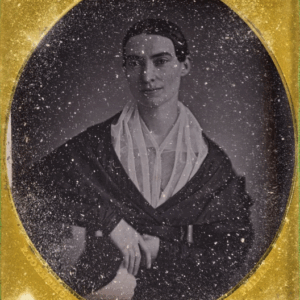JTF (just the facts): A total of 7 color photographs, framed in white and unmatted, and hung against white walls in the main gallery space. All of the works are archival pigment prints, made between 2013 and 2018. The prints are sized either 16×24 inches (in editions of 10) or 24×36 inches (in editions of 5). (Installation shots below.)
Comments/Context: The self-service coin-operated car wash is a vanishing piece of American car culture. It’s not so much that these car washes have obviously been made obsolete by technology – they are simply covered ports with overhead hoses after all – it’s more that our service-centric lives have come to demand something easier and less time consuming than a do-it-yourself operation generally offers. The drive-through car wash was developed to meet this need (now with fancy brushless rotors, various sprays and washing steps, and waiting lounges filled with greeting cards and air fresheners), leaving the old style car wash ports to lie largely dormant and empty along our nation’s roadways.
Mark Lyon’s Bay Views repurposes these car washes as the setting for an ongoing project that relies on the consistent architecture of these no frills locations. Each space is a rectangular box with open ends (to allow the cars to pull in and out), generally with a concrete floor, painted cinder block walls, and little else, aside from the sprayers. By positioning his camera in the exact center of the floor and looking back toward one of the openings, he aligns the lines of perspective up perfectly, creating a tunnel-like box shape with floor and ceiling of equal proportions. And by setting up the scene in the same way in car wash ports across the East coast of the United States (although largely in his home state of New York), he has created a typology of sorts.
Inside the bays, we see how materials and paint have transformed the interiors. Of course, there are bland, whitewashed bays, but others are enlivened by corrugated siding (aligned horizontally or vertically), or a jaunty stripe of paint down the middle of the walls. The Fort Knox car wash wins the prize for most inventive paint, with its floating blue bubbles, while the Scrub a Dub car wash goes the other way, opting for the utilitarian gloom of unpainted grey walls – and perhaps there is some cosmic karma at work for this uninspiring decorative decision, as this particular car wash bay is now seemingly a storage place for leftover building materials.
The best feature of this series is how Lyon uses the open bay as a framing device, the walls on each side creating a smaller rectangle at the end that surrounds what is outside (and in a few cases, there is even a physical wood frame around the opening as an additional border). Often Lyon shoots at twilight, and the outdoor scenes drop into hues of soft blue and purple, which contrast crisply with the starkness of the lit interiors. Street lights and a nearby vacuum station emit bright hazy light, adding soft pinks to the palette, while another bay is blocked off entirely by a blue tarp, creating an aqua-colored grid across the opening. The other images capture a range of nearby realities – snowy woods, vacant lots and outbuildings, city streets with row houses, and other scrubby landscapes – each flattened into horizontal layers and simple found geometries that match the rigor of the car wash bays themselves.
While Lyon’s central aesthetic idea is straightforward, the car washes provide the opportunity for more compositional complexity than we might have imagined. The telescope effect of the bay turns the cropped image at the far end into something akin to a poster or a diorama, the external environment chopped into a rectangle and seemingly hung on the wall like a painting. It is this subtle strangeness of perspective, and the related oscillating effect of flatness and dimensionality, that keeps us looking.
Collector’s POV: The prints in this show range in price from $3000 to $4300, based on size and place in the edition. Lyon’s work has little secondary market history at this point, so gallery retail remains the best option for those collectors interested in following up.








